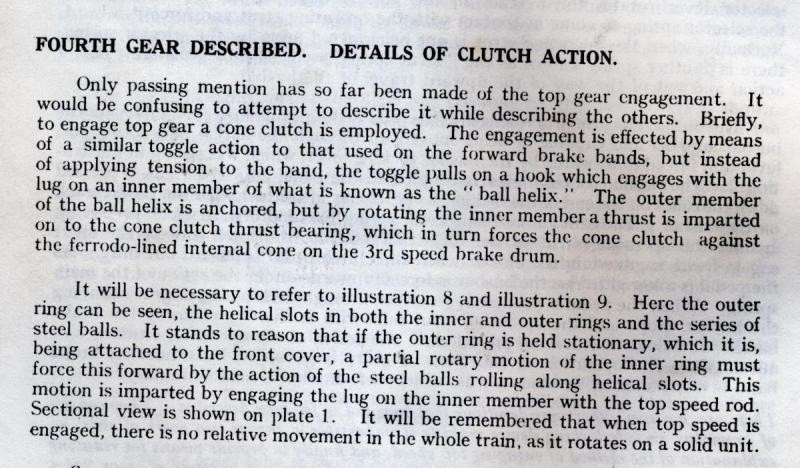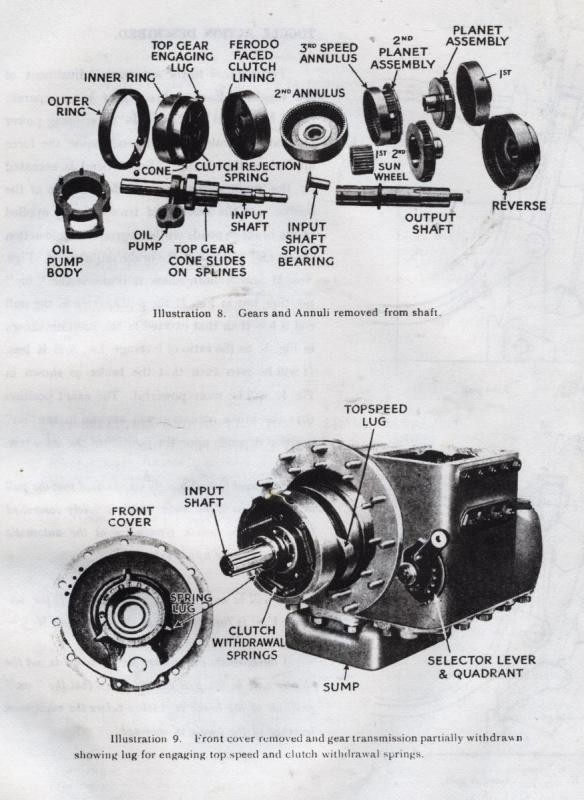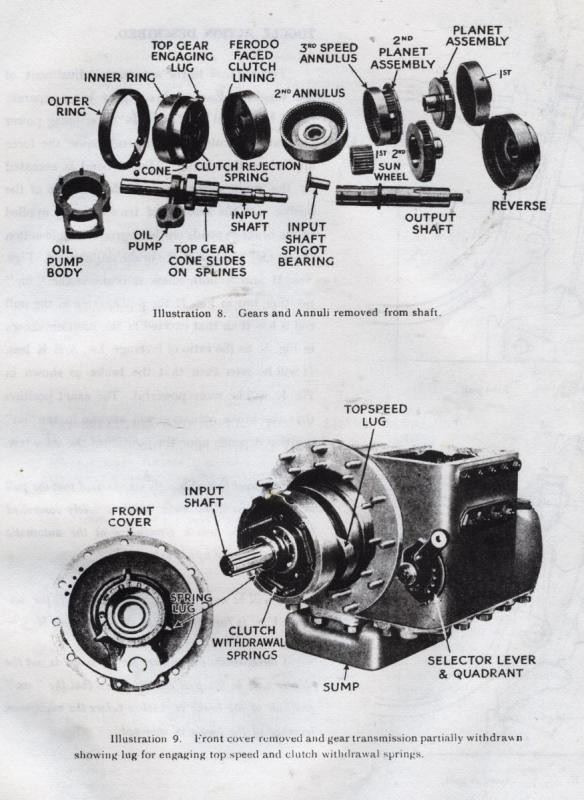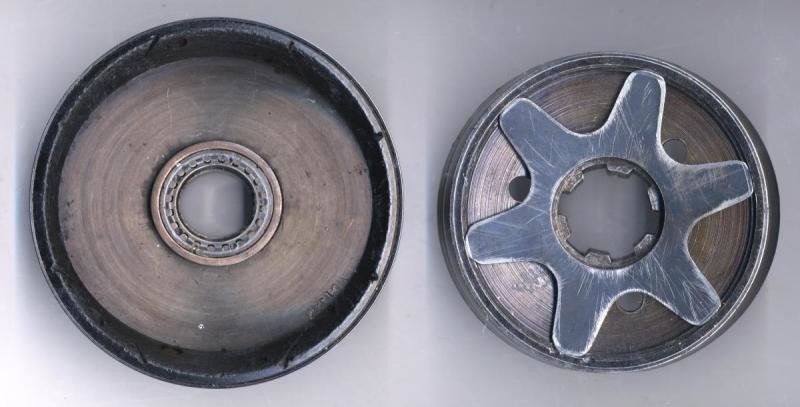You must be logged in to rate content!
4 minute(s) of a 484 minute read
8-23-2019



Below are the two or three if you include the "star spring", vital parts of top gear. These are scans rather than photographs. I will see if I cannot get something clearer for you. When you have it all laid out on your work bench it ceases to be so confusing. If the people who worked on these cars in 1934 could understand the text. You should not have any trouble doing so today.

8-25-2019
Unfortunately for me, the gearbox would "select" Top gear but failed to "drive"in it. To my limited knowledge ( I rebuilt my first Lagonda Rapier in 1978 or there abouts) the Top-gear (cone clutch) will only fail to drive when it's friction linings are totally worn out or as I suspect, in this case the operator fitting the new lining has machined far too much material away on the "female" half of the cone. to the extent that the male "half" was not making sufficient, if any, contact. This to the extent that while driving down a reasonably steep incline that the car would not maintain speed with top gear engaged and the motor running at about 4,000 rpm. Much the same as a slipping clutch except the "clutch" is the coupling inside the gearbox, Top Gear being in effect Direct Drive. While perhaps overly complicated for the average owner/driver it is not "Rocket Science". The transmission in a "T" model Ford is not all that different!
The ENV Preselector is designed to self adjust to compensate for normal wear. There is not really room here to fully describe the operation of the gear "selection" mechanism. The actual mechanism is totally different to a conventional gearbox in that it is an epicyclic transmission. The Lagonda Rapier uses an ENV 75 gearbox made under Wilson Patents.
Wikipedia explains them thus:-
A preselector or self-changing[1] gearbox is a type of manual gearbox (US: transmission) used on a variety of vehicles, most commonly in the 1930s. The defining characteristic of a preselector gearbox is that the manual shift lever is used to "pre-select" the next gear to be used, then a separate control (a foot pedal) is used to engage this in one single operation, without needing to work a manual clutch.[1] Most pre-selector transmissions avoid a driver-controlled clutch entirely. Some use one solely for starting off.[2]
Preselector gearboxes are not automatic gearboxes, although they may have internal similarities. A fully automatic gearbox is able to select the ratio used; with a preselector gearbox, gear selection remains the driver's decision.
There are several radically different mechanical designs of preselector gearbox. The best known is the Wilson design.[3] Some gearboxes, such as the Cotal, shift gears immediately as the control is moved, without requiring the separate pedal action. These are termed 'self-changing' gearboxes, but were considered under the same overall heading.[note 1] In recent years, a similar role is carried out by the increasing number of 'Tiptronic' or 'paddle shift' gearboxes, using manual selection and immediate automated changing.
There is a huge amount of information available through "Google" etc. For a great many years the famous London Double Decker "Busses" used a form of Pre-selector Transmission. In the 1930s Englands famous ERA Racing cars all used "Wilson Preselector gearboxes.
Again during the 1930s many of Englands "Quality Car Manufacturers offered Preselector gearboxes as either an option or as standard equipment. You may have heard of some:- Daimler, Riley, Armstrong Siddley, Crossley, Triumph, ERA & MG. in many of their famous Racing Models, "K3" being probably amoung the best known of the MGs.
Great detail!
Posted by Diggymart on 6/20/19 @ 2:41:04 PM